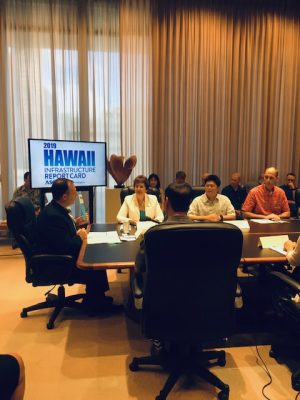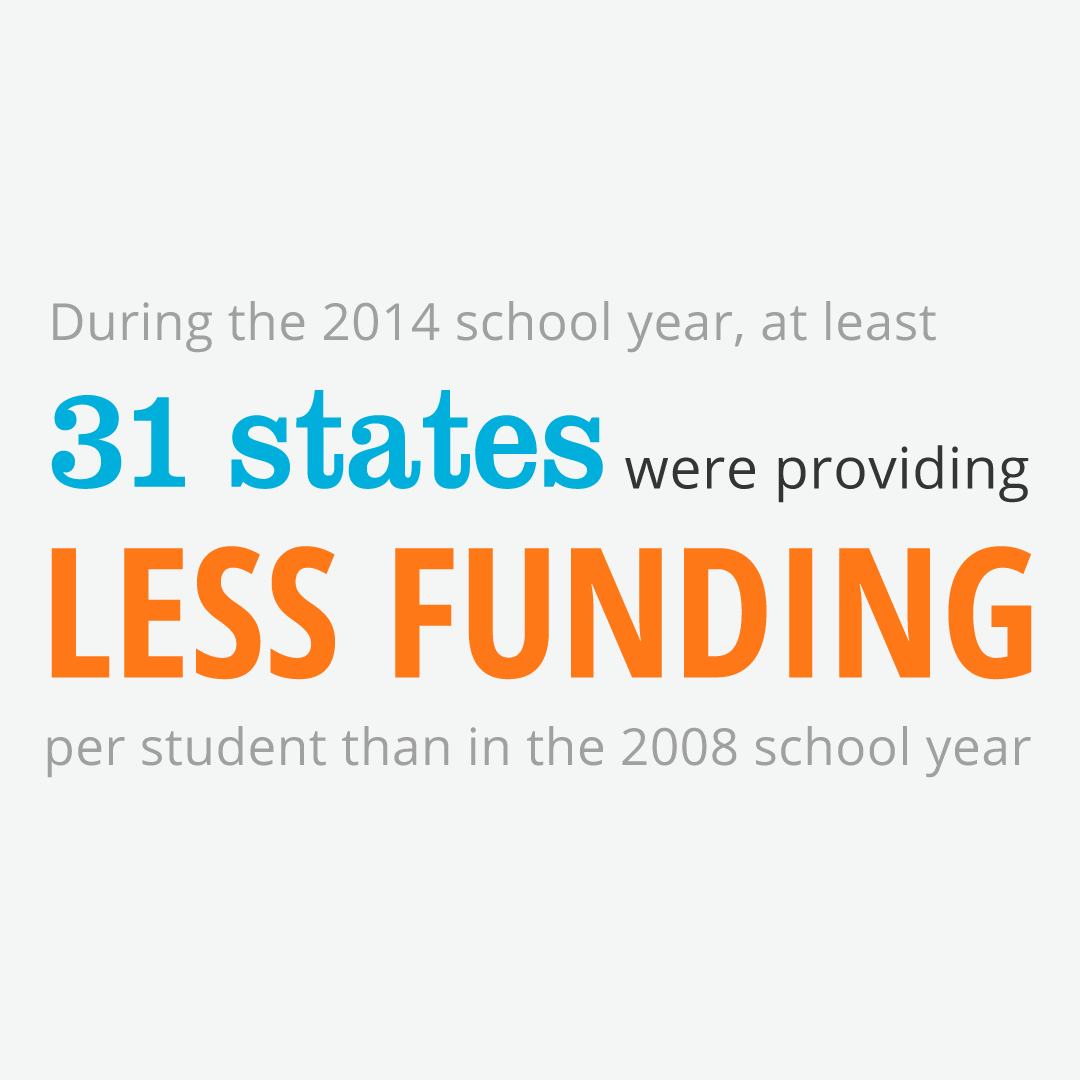
The Aloha State’s infrastructure sits in poor condition, mostly due to aging infrastructure, lack of funding, and sea level rise. Today, the Hawai‘i Section of the American Society of Civil Engineers (ASCE) released the inaugural 2019 Report Card for Hawai‘i’s Infrastructure, grading 11 categories of the region’s infrastructure, resulting in an overall grade point average of “D+.” The state’s roadways are among the most congested in the nation, and there is a $23 billion transportation infrastructure funding gap over the next 20 years. Overall, the region’s infrastructure is in poor to fair condition, with many elements approaching the end of their service life.
Civil engineers examined the state’s aviation (C-), bridges (C+), coastal areas (C-), dams (D), drinking water (D+), energy (C-), roads (D+), schools (D+), solid waste (C), stormwater (D-) and wastewater (D+). The Report Card was released at a press conference hosted by Hawai‘i Lieutenant Governor (Lt. Gov.) Josh Green at the Hawai‘i State Capitol in Honolulu, Hawai‘i. Lt. Gov. Green stressed the urgency of acting now to invest in the state’s infrastructure for the good people of Hawai‘i. ASCE President Robin A. Kemper gave remarks on the 2017 Infrastructure Report Card and the need to modernize the nation’s infrastructure.
Stormwater received the lowest grade in the Report Card, sitting at a “D-.” The state has experienced an increase in extreme flooding caused by high tides, storm surges, hurricanes, tsunamis and sea level rise. This flooding not only harms housing and infrastructure, but it also causes pollutants, trash and debris to enter Hawai‘i’s water resources.
Additionally, lack of funding and aging assets for the state’s drinking water and wastewater systems are concerning. Some of Hawai‘i’s drinking water and wastewater systems are plagued by infiltration of saline groundwater and exhibit funding gaps when it comes to available revenue versus total needs. Water main breaks, flood water damage, loss of property from coastal erosion and beach and park closures from brown water advisories are all results of deteriorating infrastructure. With much of Hawai‘i’s population located along the coastline, the resiliency of the wastewater infrastructure in coping with sea level rise and increasing severity of storm events is extremely critical.
There are also positives when it comes to Hawai‘i’s infrastructure. The state leads the nation in both residential solar power generated per household and is third in solar photovoltaic capacity installed. However, because the island geography is unique and sits in an isolated location, there are unique challenges for the state’s energy infrastructure. Hawai‘i currently has the highest electricity cost per kilowatt hour in the nation— approximately 2.5 times the national average. To bring costs down and better protect the environment, Hawai‘i aims to generate 100 percent of electricity with renewable sources by 2045.
School infrastructure is also worrisome for the state. Hawai‘i’s public school facilities are challenged by population growth and a lack of adequate funding. As of 2017, the average age of the schools overseen by the Hawai‘i Department of Education (HIDOE) was 62 years old, while 53 buildings were over 100 years old. When a facility is beyond its useful life, higher maintenance and repair costs are anticipated.
In order to raise the state’s grade for the next assessment, the Report Card offers short- and long-term solutions:
- Fund short and long-term strategies to address the impacts of sea-level rise and other natural disasters and weather events. In the short term, education regarding beach nourishment is needed and funding should be identified and directed toward shoreline protection projects. In the long term, the state should prioritize funding to address the impacts of sea level rise on Hawai‘i’s existing infrastructure.
- The state legislature should increase the state gas tax and support innovative funding mechanisms.
- Significant funding for engineering investigations, repairs and maintenance are necessary to help Hawai‘i’s dams meet current safety standards and minimize the risk to downstream communities and the general public.
- Rates for both drinking water and wastewater utilities should reflect the true cost of service and Hawai‘ian communities should leverage available loan and grant programs to ensure public safety and the environment is protected.
- Take advantage of new laws in place that allow stormwater to be recognized as a utility and further develop county stormwater fees. These fees can help pay for the retrofitting of flood control infrastructure and water quality improvement projects.
A full copy of the 2019 Report Card for Hawai‘i’s Infrastructure is available at InfrastructureReportCard.org/Hawai‘i.


































